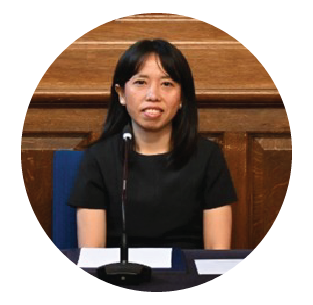NOISE LEVEL IDENTIFICATION ON DENTAL CLINIC

Downloads
Background: Noise is a problem affecting toothache patients psychological and physical aspects. The dental clinic can be a source of noise because it contrasts with the function of the dental clinic as a place of healing. Noise can cause toothache to be more psychologically painful, which causes dryness of the oral cavity. Purpose: Therefore, it is necessary to know how much the noise level in the dental clinic is with the case study of the Benowo dental clinic and where it comes from. Method: The researchers used an explorative method and observations to realize this activity. This study begins by calculating the clinical noise level using a sound meter, and then the results are compared with a literature study. Result: The highest noise recorded in this clinic reaches 84 dB. This is very far from the sound level recommended by SNI 03-6386-2000, which is 45 dB for dental clinics. Outside noise comes from roads, trains, and parking areas. The nature of noise from outside is sporadic, but the intensity of the noise is very high. Sources of noise from inside come from activities in the medicine room, patient conversations, drills, scaling, and compressors. Noise from within is continuous but less intense. Conclusion: The design of the dental clinic must consider the acoustic aspect as the central aspect. Further research is needed to choose the right design concept to protect the dental clinic from noise.
Andriani, E., 2020. Studi Keluhan Subyektif dan Intensitas Bising di Pemukiman Sepanjang Rel Kereta Api Kelurahan Pegirian Kota Surabaya. Poltekkes Kemenkes Surabaya.
Astuti, I.A.D., 2016. Pengembangan Alat Eksperimen Cepat Rambat Bunyi dalam Medium Udara dengan Menggunakan Metode Time of Flight (ToF) dan Berbantuan Software Audacity. UPEJ Unnes Phys. Educ. J. Vol.5(3), Pp. 18-24.
Baskoro, S., 2017. Surabaya sebagai Kota Kolonial Modern pada Akhir Abad ke-19: Industri, Transportasi, Permukiman, dan Kemajemukan Masyarakat. Mozaik Hum. Vol.17(1), Pp. 157-180.
Cox, T.J., D'Antonio, P., 2017. Acoustic Absorbers and Diffusers Theory, Design and Application, 3 rd. ed. CRC Press, New York.
Dierickx, M., Verschraegen, S., Wierinck, E., Willems, G., Wieringen, A. van, 2021. Noise Disturbance and Potential Hearing Loss Due to Exposure of Dental Equipment in Flemish Dentists. Int. J. Environ. Res. Public Health Vol.18(11), Pp. 5617.
Egan, M.D., 2007. Architectural Acoustics. J Ross Publishing Classics, New York.
Elmehdi, H.M., 2010. Assessing Acoustic Noise Levels in Dental Clinics and Its Link to Dental Anxiety and Fear among UAE Population. In: Proceedings of 20th International Congress on Acoustics. ICA 2010, Sydney, Australia, p. Pp. 1-4.
Fachrul, M.F., Yulyanto, W.E., Maulana, S., 2014. Kajian mengenai Tingkat Kebisingan Lingkungan dan Spektrum Frekuensi akibat Lalu Lintas Kereta Api (Studi kasus: permukiman di Kota Yogyakarta dan Kota Bandung). Universitas Trisakti.
H.C, D., Pangemanan, P., Engka, J.N.A., Sapulete, I.M., 2012. Pengaruh Pajanan Bising terhadap Pendengaran dan Tekanan Darah pada Pekerja Game Center di Kota Manado. J. Biomedik JBM Vol.4(3), Pp. S133-S140.
Ikhasari, A., Wibowo, E., 2019. Analisis Variansi Kebisingan di Pemukiman Sekitar Rel Kereta Api Jalan Rakata Bandung menggunakan Soundscape berdasarkan Perbedaan Waktu. eProceedings Eng. Vol.6(1), Pp. 1097-1104.
Imran, M., 2013. Studi Tingkat Kebisingan Lalu Lintas Jalan pada Area Sempadan Bangunan (Studi Kasus: Jalan Poros Maros - Makassar, km. 5 Maccopa). J. Perad. Sains, Rekayasa, dan Teknol. Vol.1(2), Pp. 160-185.
Jamaludin, A.N., 2015. Sosiologi Perkotaan: Memahami Masyarakat Kota dan Problematikanya, 1 st. ed. CV Pustaka Setia, Bandung.
Long, M., 2006. Architectural Acoustics, 1 st. ed. Elsevier, New York.
Lubis, W. hafny, 2003. Stres Akut karena Bising sebagai Penyebab Terjadinya Xerostomia. J. Dent. Indones. Vol.10(3), Pp. 821-825.
Mashuri, Y.A., 2009. Perbedaan Kadar Kortisol akibat Bising Pesawat Udara pada Masyarakat di Sekitar Bandara Adi Sumarmo Boyolali. Universitas Sebelas Maret.
Mediastika, C.E., 2005. Akustika Bangunan. Erlangga, Jakarta.
Moller, A., 2006. Hearing: Anatomy, Physiology, and Disorders of The Auditory System, 2 nd. ed. Academic Press.
Muppa, R., Bhupatiraju, P., Duddu, M., Penumatsa, N.V., Dandempally, A., Panthula, P., 2013. Comparison of Anxiety Levels Associated with Noise in The Dental Clinic among Children of Age Group 6-15 Years. Noise Heal. Vol.15(64), Pp. 190-193.
Qifari, A.F., 2018. The Effect of Acoustic Filters in Reducing Noise Levels in Different Dental Settings. EC Dent. Sci. Vol.17(11), Pp. 2031-2033.
Renterghem, T. Van, Botteldooren, D., 2009. Reducing the Acoustical Façade Load from Road Traffic with Green Roofs. Build. Environ. Vol.44(5), Pp. 1081-1087.
Suryani, N.D.I., 2015. Analisis Pengaruh Tingkat Kebisingan dan Getaran Kereta Api terhadap Tekanan Darah Ibu Rumah Tangga di Pemukiman Pinggiran Rel Kereta Api Jalan Ambengan Surabaya. Universitas Airlangga.
Syafiul, S., 2005. Analisis Kebisingan Arus Lalu Lintas dan Geometri Jalan di Kawasan Simpang Lima Kota Semarang. Universitas Diponegoro.
Theodoroff, S.M., Folmer, R.L., 2015. Hearing Loss Associated with Long-Term Exposure to High-Speed Dental Handpieces. Gen. Dent. Vol.63(3), Pp. 71-76.
Virgan, T.E., 2008. Building Acoustics. Taylor & Francis Group, London and New York.
Widuri, A., Kurniawati, D.K., 2011. Bising Lingkungan Tempat Tinggal Kita sebagai Faktor Risiko Presbiakusis. J. Mutiara Med. J. Kedokt. dan Kesehat. Vol.11(1), Pp. 62-66.
Yousuf, A., Ganta, S., Nagaraj, A., Pareek, S., Atri, M., Sing, K., Sidiq, M., 2014. Acoustic Noise Levels of Dental Equipments and Its Association with Fear and Annoyance Levels among Patients Attending Different Dental Clinic Setups in Jaipur, India. J. Clin. Diagnostic Res. Vol.8(4), Pp. ZC29-ZC34
Copyright (c) 2022 Journal of Vocational Health Studies

This work is licensed under a Creative Commons Attribution-NonCommercial-ShareAlike 4.0 International License.
- The authors agree to transfer the transfer copyright of the article to the Journal of Vocational Health Studies (JVHS) effective if and when the paper is accepted for publication.
- Legal formal aspect of journal publication accessibility refers to Creative Commons Attribution-NonCommercial-ShareAlike (CC BY-NC-SA), implies that publication can be used for non-commercial purposes in its original form.
- Every publications (printed/electronic) are open access for educational purposes, research, and library. Other that the aims mentioned above, editorial board is not responsible for copyright violation.
Journal of Vocational Health Studies is licensed under a Creative Commons Attribution-NonCommercial-ShareAlike 4.0 International License














































